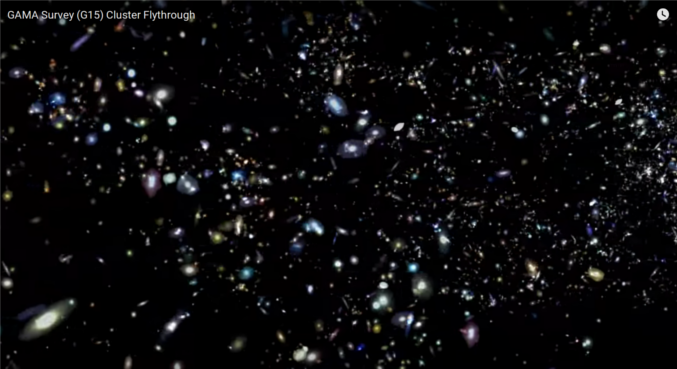
It was nearly a century ago, in the 1920s, that Edwin Hubble, using the then revolutionary 100-in telescope on Mount Wilson in California, discovered that most of the numerous mysterious dim fuzzy nebulae dotted around the sky were in fact what we now call galaxies: very distant, vast conglomerations of up to hundreds of billions of stars, tens of thousands of light years in extent, and typically separated from one another by millions of light years. And it was Hubble, in the following decade, using photographic plates of exposures from the same telescope, who first investigated the morphologies of these galaxies. The galaxies he catagorised ranged from featureless, bulbous ellipsoids – the Elliptical Galaxies – to thin disks hosting majestic spiral structures – the Spiral Galaxies. Hubble speculated that these structures were tracing an evolutional sequence from Elliptical to Spirals, encapsulated by his famous “tuning fork” diagram of the “Hubble Sequence”. Our own galaxy, the Milky Way lies towards the more spiral-dominated end of the Hubble Sequence, which Hubble would have supposed was an advanced stage of evolution.
However, the first investigations of the colours of these galaxies, in the 1950s, showed that the light from spirals was actually dominated by the emission from blue young stars, whereas the light from Ellipticals was dominated by old, red stars. Thus, the evolution of galaxies along the tuning fork, if it happened at all, would actually have had to have proceded in the opposite sense, from Spirals to Ellipticals, and be accompanied by a colour change from blue to red. Whether, and how, this evolution in morphology and colour happened has remained one of the main theoretical and observational challenges in astronomy right up to the present day. Indeed, the resolution of this puzzle is fundamental to understanding the evolution of the visible Universe since the big bang.
A flythrough a region of the Universe populated by the galaxies investigated in this study.
Modern theories of galaxy evolution have focussed on the fact that stars form out of gas, so that, in order to maintain their observed population of blue young stars, which have relatively short lifetimes, spiral galaxies would have to constantly import new supplies of gas out of the surrounding intergalactic medium to fuel ongoing star formation in their disks. Any disruption of the supply of intergalactic gas into the galaxy would then “starve” the galaxies of the fuel they need to maintain star formation, so that the galaxies would gradually turn red as the massive blues stars died out, leaving behind a red dead galaxy. This cut off in fuelling out of the intergalactic medium was predicted to happen in denser, more highly populated regions of the Universe, in groups of galaxies.
A new work, published in the latest edition of the Astronomical Journal (AJ vol 153, pg. 111-160, 2017) by an international team led by astrophysicists from the Max-Planck Institute fur Kernphysik in Heidelberg, Germany and Prof. Cristina Popescu from the JHI Institute of the University of Central Lancashire have unexpectedly found that, contrary to theoretical predictions, the population of spiral galaxies in groups are not suffering from a starvation of gas from the intergalactic medium, but, instead, are apparently gorging themselves on the rich reserves of gas in the groups. This is akin to galaxies in groups having a fatty diet, resulting in a transformation to the bloated elliptical geometry through gluttony, in marked contrast to the previous ideas where star formation was cut off due to starvation of gas supply. This fatty diet will ultimately “kill” the galaxies, in terms of halting their ongoing star formation, once the transformation from spiral to elliptical morphology is complete.
The results give new life to Hubble’s original idea that the Hubble sequence is actually an evolutionary sequence (albeit in the opposite sense to that envisaged by Hubble), since the authors’ proposed mechanism of morphology change from spiral to elliptical via gluttony is a secular mechanism – ie the mechanism requires no other process like interaction with other galaxies to effect the morphology change.
